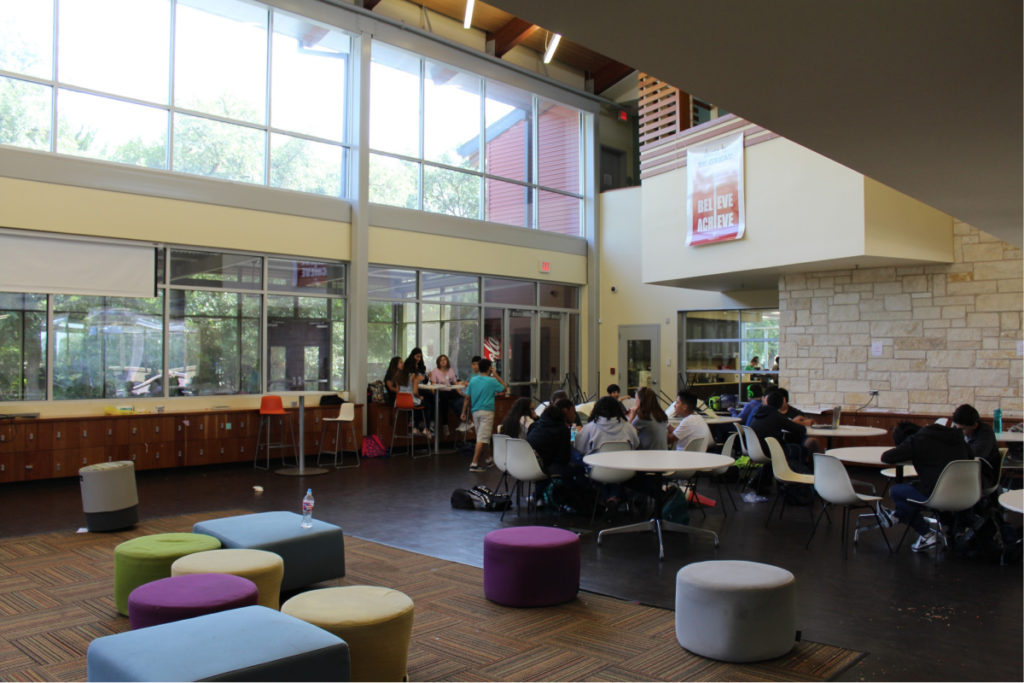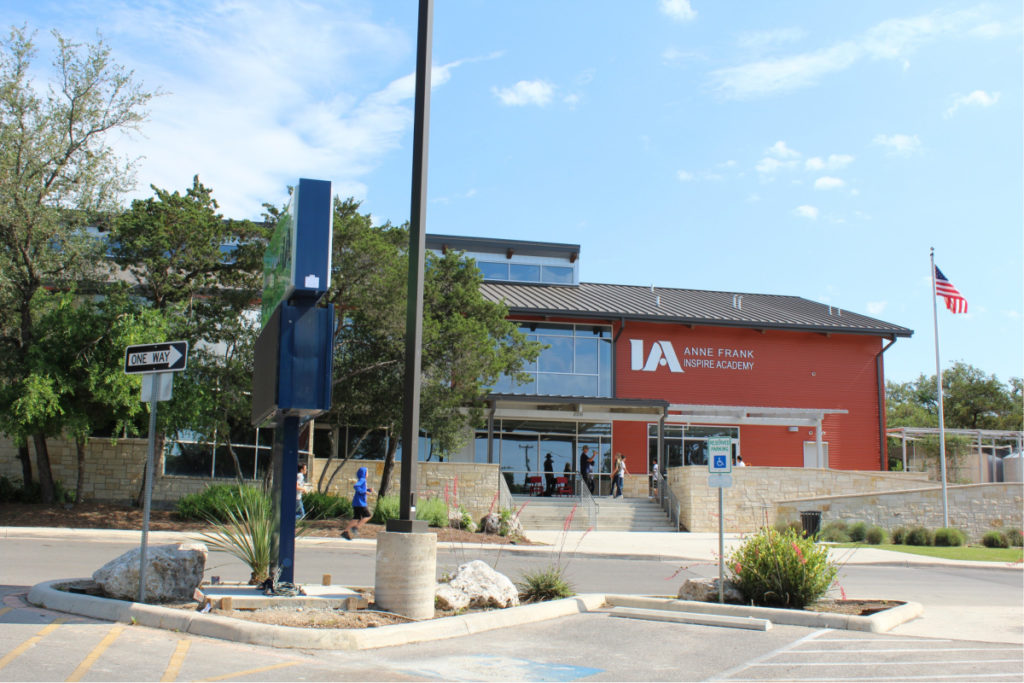
Learning That Matters: Using an Inquiry-Based Learning Approach at Home
Mom, why is the sky blue? How do roller coasters work? Do skunks think other skunks stink? How does the weatherman know it’s going to rain tomorrow? Why do crickets chirp at night?
These are the kinds of questions that we as parents are often faced with, but rarely have all the answers to. Some may have even piqued our own interest and made us wonder. After all, why do crickets chirp at night?
At Anne Frank Inspire Academy, we balance teaching the fundamentals, such as math, science and English, with helping students build the unique skill set required to become lifelong learners and explore their curiosities and wonderings themselves. This type of approach to education is commonly referred to as inquiry-based learning.
While the above questions are an attempt to use humor to engage you in this article, they also demonstrate how quickly our brains can begin to wonder and how those wonderings can lead to real, meaningful learning. This is the same process that has led the greatest minds in history to revolutionary discoveries like electricity or the atom. It’s also the process that continues to drive experts to breakthrough discoveries today.
The inquiry-based approach is one that, regardless of age or grade level, frees students to develop new interests and discover their untapped potential. It teaches them to become perpetual learners—something not easily taught, but invaluable throughout higher education, as well as in the workplace. And the reason we’re sharing this model with you now—it’s never been more relevant than it is today, as parents and students continue to navigate the unconventional educational structure of a COVID-19 era.
For more ideas about projects and learning approaches you can do at home with your kids, visit the main page, Charter a Summer of Learning.
The “Why” Behind Inquiry
For decades, educators have discussed how to make what’s being taught in the classroom more relevant to students, but they’ve been hesitant to initiate the changes necessary to accomplish that goal. Anne Frank Inspire Academy is proud to partner with Common Ground Collaborative and schools around the globe to implement a process that allows relevance to drive learning rather than seeking relevance in theme-based subjects.
Relevance is created when one’s AGENCY, or the urge to act, collides with the URGENCY of a situation. This is showcased in our world today via public health and COVID-19, as well as through social justice and the case of George Floyd. Agency is what motivates us, whether that is caring for others, fairness, social equality or climate. Agency is what each of us has that inspires us to act, and urgency is why we need to act now.
Having the motivation to act is not enough to spur on learning though; we must also have a way to explore and express what we are learning. To that point, we have identified six commonalities all learners possess. We explore and express learning through: Story Telling, Principles and Patterns, Creativity and Innovation, Systems and Sustainability, Purpose and Balance, and Individuals and Groups. These commonalities are where we can embed the learner’s voice and choice, therefore making the topic meaningful and relevant to the student.
The “What” Behind Inquiry
Anne Frank Inspire Academy follows a flexible and systematic approach to inquiry-based learning, which can be applied from home. Think of this as the six steps to incorporating inquiry-based learning into your student’s schooling routine.
STEP 1: IDENTIFY
IDENTIFY a broad topic that is worth learning about. Examples of these topics could include: the current state of the world, what is happiness, censorship, friendship, or community. We want the topic to be broad enough to allow multiple ages and grade levels to explore it, but at a depth appropriate for their educational development.
STEP 2: ACTIVATE
ACTIVATE their natural wonderings about the topic by sharing articles, literary resources, and videos, as well as initiating discussions about the topic. Then, the student is tasked with debriefing what they’ve learned by reflecting on the five F’s: First Impression, Feelings, Facts, Finding, and Future.
First Impression asks the student to dive into what they noticed during their research and discovery, challenging them to do so without attaching emotions or opinions to it.
Feelings explores how a student felt while learning about the topic—did you like it or not? Did it evoke emotion?
The Facts portion of the assignment focuses on what facts the student can pull out of what they’ve read or watched.
Finding prompts their conclusions, combining both their feelings and findings to draw these conclusions.
Culminating in the final F, Future, which asks the student to explore how they can use this information moving forward.
By completing this debriefing process, students are guided to discern what stood out to them and then identify areas that they would like to know more about.
STEP 3: EXPLORE
During this step, we allow the learner to EXPLORE their findings and future uses of their wonderings. This may lead students to a quick understanding, but it also may take them down a rabbit hole, and with that, a new set of questions and wonderings emerge.
STEP 4: CREATE
The learner then CREATES a way to express their findings, using one or more of the six commonalities referenced above. These commonalities have a connection to theme-based subjects. For example, Stories and Signals connects to English, while Individuals and Groups relates to social studies. Principles and Patterns drives at math and science concepts. Below are a few examples of the types of expressions that fall under each of these commonalities.
Story Telling: songs, poems, stories
Principles and Patterns: experiments, graphs, charts
Innovation: new products or new uses of old products, artwork
Systems and Sustainability: procedures and policies
Purpose and Balance: wellness plans, workout plans
Individual and Groups: surveys, interviews
STEP 5: SHARE
The learner then SHARES what they created, connecting it back to their initial wonderings and broad topic.
STEP 6: REFLECT
For the final step, students are prompted to REFLECT on what they’ve learned throughout the process. What would they have done differently? Are there any future wonderings that they would like to explore?
Let’s Implement Inquiry-Based Learning
What emerges from this 6-step process is a deeper understanding of the issues and questions that students are faced with today. It paves the way for a new way of thinking, a process that they can implement throughout their educational career and beyond. They have ownership of what they’ve learned and often unearth new paths of curiosity to follow. It’s a beautiful cycle and one that develops a true love of learning.
During a time in which we are all navigating an at-home educational environment, inquiry-based learning lends itself to the times and may be your student’s key to staying motivated and engaged with their studies.
So, the next time you hear, “Mom, why is the sky blue,” know that it’s okay that you don’t have the answer. In fact, it’s even better, because now you’ll have the opportunity to help your child explore their wild ideas and wonderings, turning question marks into periods and curiosities into facts. Let inquiry-based learning empower your child to never stop asking, but also start discovering!
Inquiry-Based Learning Prompts
Ready for your first inquiry-based project? Here are some topics to get your student started:
The current state of the world
What is happiness?
Why do things change?
Clean sustainable water
Whatever else you desire!
Love the inquiry-based learning model, but not sure you’re ready to implement it on your own? Anne Frank Inspire Academy is offering four different, flexible learning options for the 2020–2021 school year that can be adjusted weekly to fit your family’s needs, from full remote learning to Face2Face, and even combination options. To learn more about Anne Frank Inspire Academy or enroll now, visit AnneFrankIA.com.
Charter Moms Chats
Watch Justin Johnston’s interview with Inga Cotton on Charter Moms Chats.
For more ideas about projects and learning approaches you can do at home with your kids, visit the main page, Charter a Summer of Learning.
About the Author
Justin Johnston is the Head of School at Anne Frank Inspire Academy, and a dedicated educator with more than 19 years of experience.



